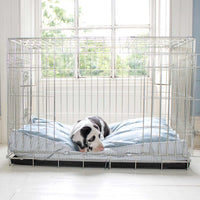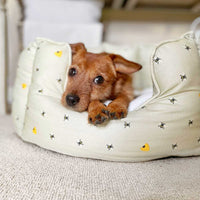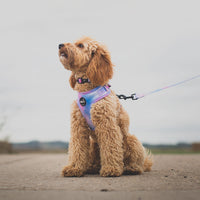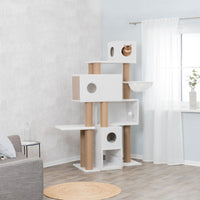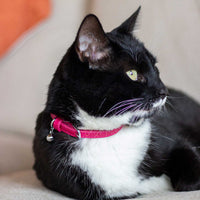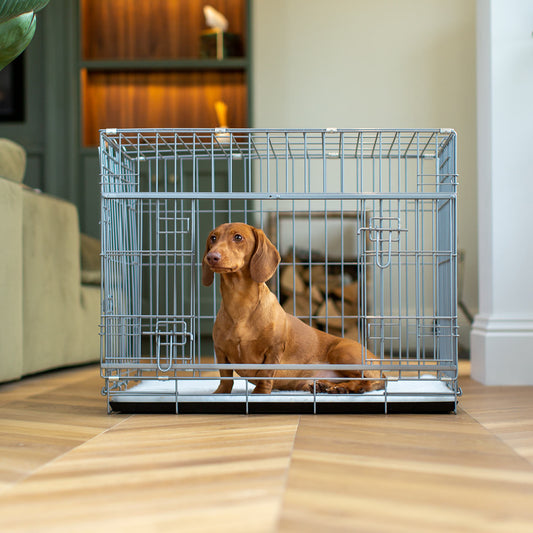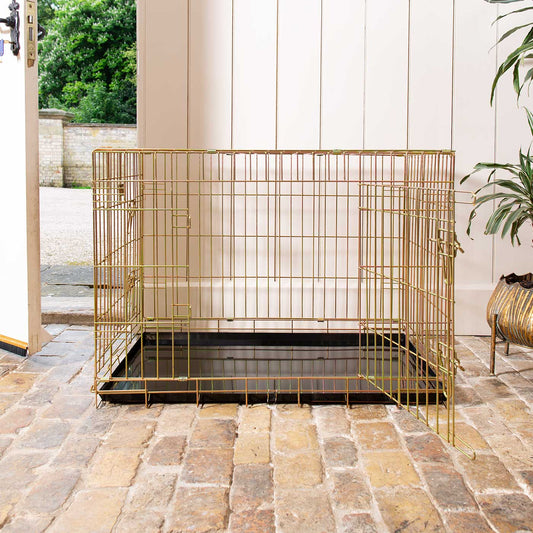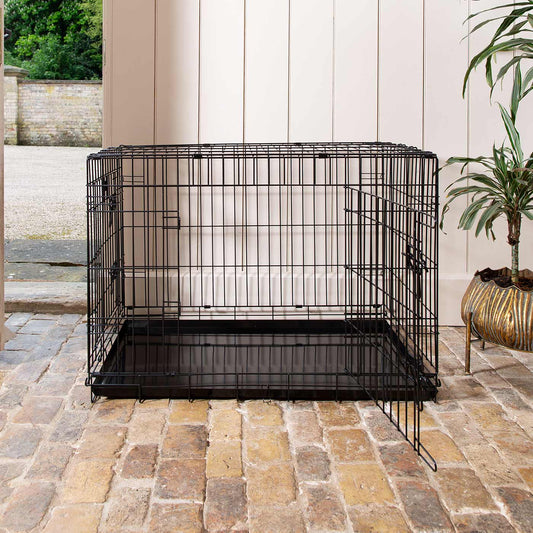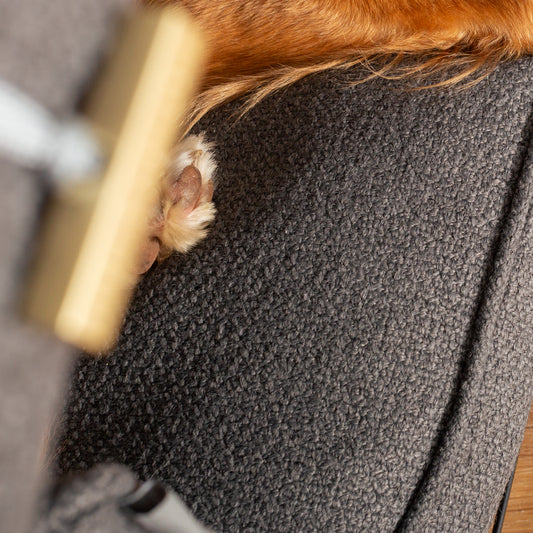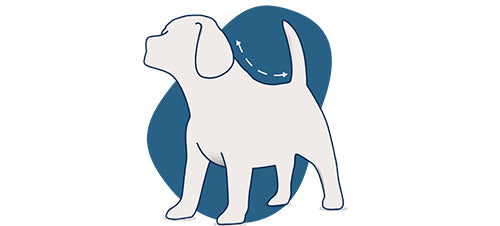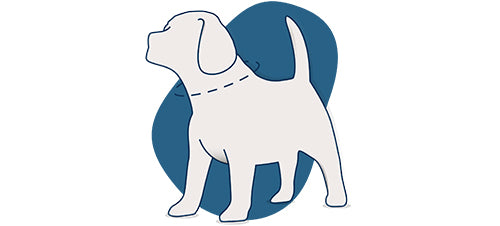Dog crates are a really important accessory for most dog owners. They are not only practical when you first bring your pup home but are just as useful for adult dogs; making a good bed when at home, a private place for them to relax. Choosing the right size for your pup isn’t always a straight-forward choice. We always suggest buying the crate in a size that will be suitable for your dog once an adult, even if you’re buying it for a puppy. You can start off by dividing the crate to make the space smaller initially and then changing the space as he grows up. So if you’re thinking, “Will This Dog Crate Be the Right Fit for My Dog?”, you’ve come to the right place! Read on to find out a little more about each crate style and it’s sizing.
Lords & Labradors Crates
Our most popular crates, the Lords & Labradors deluxe dog crates are available in three colours and five sizes. As a guide we’d recommend a crate that is around 3-4” taller than your adult dog will grow to. There should be plenty of room for your dog to stand and move around in the crate without feeling cramped. The longer you intend to keep them inside their crate (we don’t recommend keeping them in there too long) the more space you may wish to give them.
Which size for which breed? A guide;
Small 24 (measures 24.5” x 18” x 20.9” High): Teacup breeds and puppies
Medium 30 (measures 30.2” x 19.5” x 21.9” High): Small breeds such as Pomeranians, Shih Tzu, Miniature Dachshunds etc.
Large 36 (measures 26.5” x 23” x 25.8” High): Medium breeds such as Cockapoos, Beagles, Springer Spaniels etc.
Extra Large 42 (measures 42.5” x 28.5” x 30.5” High): Large breeds such as Boxers, Labradors, Dalmatians etc.
Extra Extra Large 48 (measures 48.5” x 29.5” x 32.7” High): Golden Retrievers, Rottweilers, German Shepherds etc.
Remember this is just a guide. Dogs, like humans, can vary in size so it might be worth talking to your breeder if you’re expecting a new pup, to gauge how big they are likely to grow. Having said that, we’d always suggest choosing bigger rather than smaller. Your dog can’t have too much room so if it’s a little on the big side it won’t matter.
Wooden Sliding Door Dog Crate
A really popular choice for those looking for a dog crate that will look great in your home, the Lords & Labradors Wooden Sliding Door Dog Crate is an attractive piece of furniture. This comes in one size as follows:
40.4" x 27.1" x 28.1": recommended for Cockapoos, Springer Spaniels and bulldogs
Its sliding door design eliminates the bulky swing door, while its beautiful finish adds a touch of class that fits any interior decor. Easily assemble in minutes and you can even choose between two beautiful colours to find your perfect fit.
Which should you choose for your dog?
So which should you choose? There are no set rules as to which crate you should pick. The main thing to be aware of is the size and picking a crate that is big enough. We always suggest choosing the size required for their adult size, if in doubt as your pup can’t really have too much room, and they grow quickly. Other than that, it really comes down to personal preference and which suits your taste aesthetically.
If you’re still unsure, do give us a call. We’re happy to discuss your requirements and the differences between each type of crate. Give us a call or chat to us on LiveChat and we’ll do all we can to help you choose the most suitable items.

























































